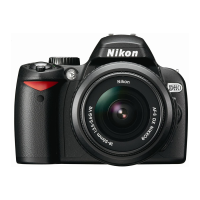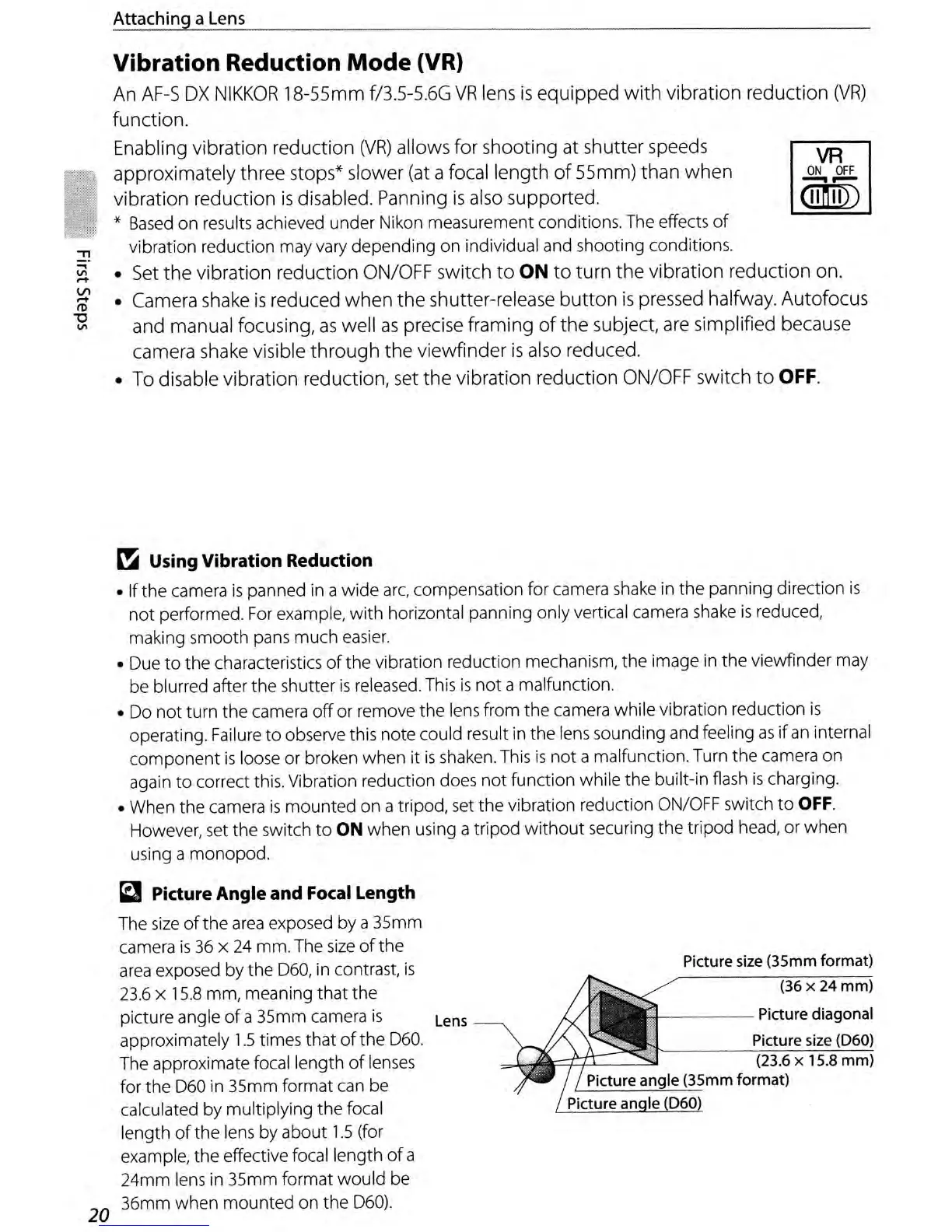VA
ON
OFF
---
<IE>
"T1
....
'"
...
VI
...
rD
"'0
'"
Attaching a Lens
Vibration Reduction
Mode
(VR)
An
AF-S
DX
NIKKOR
18-55mm
f/3.5-5.6G
VR
lens
is
equipped
with
vibration
reduction
(VR)
function.
Enabling
vibration
reduction
(VR)
allows
for
shooting
at
shutter
speeds
approximately
three
stops*
slower
(at a focal
length
of
55mm)
than
when
vibration
reduction
is
disabled.
Panning
is
also
supported.
*
Based
on results achieved under Nikon measurement conditions.
The
effects
of
vibration reduction may vary depending on individual and shooting conditions.
• Set
the
vibration
reduction
ON/OFF
switch
to
ON
to
turn
the
vibration
reduction
on.
• Camera shake
is
reduced
when
the
shutter-release
button
is
pressed halfway.
Autofocus
and
manual
focusing,
as
well
as
precise
framing
of
the
subject. are
simplified
because
camera
shake visible
through
the
viewfinder
is
also
reduced.
•
To
disable
vibration
reduction,
set
the
vibration
reduction
ON/OFF
switch
to
OFF.
Picture size (35mm format)
(36x
24mm)
~
Using Vibration Reduction
• Ifthe camera
is
panned
in
a wide
arc,
compensation for camera
shake
in
the panning direction
is
not performed.
For
example, with horizontal panning only vertical camera
shake
is
reduced,
making smooth pans much
easier.
• Due to the characteristics
of
the vibration reduction mechanism, the image in the viewfinder may
be blurred after the shutter
is
released.
This
is
not a malfunction.
• Do not turn the camera
off
or remove the
lens
from the camera while vibration reduction
is
operating. Failure
to
observe this note could result in the
lens
sounding and feeling
as
if
an
internal
component
is
loose or broken when it
is
shaken.
This
is
not a malfunction. Turn the camera on
again
to
correct this. Vibration reduction does not function while the built-in flash
is
charging.
• When the camera
is
mounted on a tripod,
set
the vibration reduction
ON/OFF
switch
to
OFF.
However,
set
the switch
to
ON
when using a tripod
without
securing the tripod head, or when
using a monopod.
ra
Picture Angle
and
Focal Length
The
size
of
the
area
exposed by a 35mm
camera
is
36
x
24
mm.
The
size
of
the
area
exposed by the
D60,
in contrast,
is
23.6
x
15.8
mm, meaning that the
picture angle
of
a 35mm camera
is
Lens
apprOXimately
1.5
times that
of
the
D60.
The approximate focal length
of
lenses
for the
D60
in
35mm format
can
be
calculated by multiplying the focal
length
of
the
lens
by about
1.5
(for
example, the effective focal length
of
a
24mm
lens
in 35mm format would be
20 36mm when mounted on the
D60).

